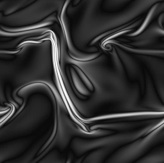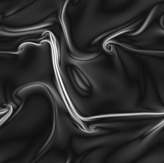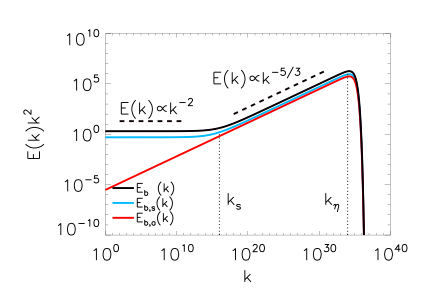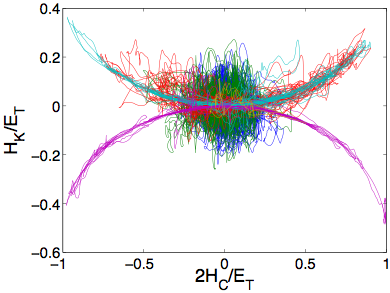MHDTURB: Non-universal statistics in
magnetohydrodynamic turbulence
MHDTURB: Non-universal statistics in
magnetohydrodynamic turbulence

magnetosphere, the dynamics of the interstellar medium, etc. However, observations, simulations and theory to date are unable to provide a definitive answer to the power law scaling of the energy spectrum of magnetohydrodynamic (MHD) turbulent flows. Hence, universality in MHD has been questioned by many authors in terms of various arguments such as dependence on initial conditions, non-locality, strong anisotropy, lack of self-preservation. Below you can find an overview of the results of this project.
 Structures and dynamics of small scales in decaying magnetohydrodynamic turbulence [link]
Structures and dynamics of small scales in decaying magnetohydrodynamic turbulence [link]
 Topological properties (e.g. QR plots) are an effective measure of non-universal behaviour of the dynamics of MHD turbulent flows.
Topological properties (e.g. QR plots) are an effective measure of non-universal behaviour of the dynamics of MHD turbulent flows.




Turbulence is a multi-scale phenomenon ubiquitous in numerous astrophysical phenomena. The precise power law scaling of the energy distribution among scales has implications to the prediction of numerous astrophysical phenomena, such as the heating rates of the solar corona and acceleration of the solar wind, the transport of mass and energy into the Earth’s




 Origins of the k−2 spectrum in decaying Taylor-Green magnetohydrodynamic turbulent flows [link]
Origins of the k−2 spectrum in decaying Taylor-Green magnetohydrodynamic turbulent flows [link]
 Strong current sheets are responsible for the E(k) ~ k−2 spectrum, not weak turbulence.
Strong current sheets are responsible for the E(k) ~ k−2 spectrum, not weak turbulence.
 Symmetry breaking of decaying magnetohydrodynamic Taylor-Green flows and consequences for universality [link] (see PRE Kaleidoscope)
Symmetry breaking of decaying magnetohydrodynamic Taylor-Green flows and consequences for universality [link] (see PRE Kaleidoscope)
 For any perturbation amplitude, no matter how small, there is a high enough Reynolds number for which the symmetries will break by the time of maximum dissipation rate (tpeak).
For any perturbation amplitude, no matter how small, there is a high enough Reynolds number for which the symmetries will break by the time of maximum dissipation rate (tpeak).


 Symmetry breaking modifies the scaling laws of the energy spectra at tpeak away from the k−2 scaling and towards the classical k−5/3 and k−3/2 power laws.
Symmetry breaking modifies the scaling laws of the energy spectra at tpeak away from the k−2 scaling and towards the classical k−5/3 and k−3/2 power laws.
 In the large scales where the symmetries are not broken, we expect a k−2 energy spectrum, while small scales recover the k−5/3 spectrum.
In the large scales where the symmetries are not broken, we expect a k−2 energy spectrum, while small scales recover the k−5/3 spectrum.

 The signature of initial conditions on magnetohydrodynamic turbulence [link]
The signature of initial conditions on magnetohydrodynamic turbulence [link]
 Initial long-range correlations between u and j create enormous and strong current sheets that dominate the energy spectrum.
Initial long-range correlations between u and j create enormous and strong current sheets that dominate the energy spectrum.
 Even though a large population of current sheets forms spontaneously and randomly in MHD, in this case the integral length scale of a current sheet was almost the size of the box.
Even though a large population of current sheets forms spontaneously and randomly in MHD, in this case the integral length scale of a current sheet was almost the size of the box.
 Curling of the current sheets modifies the scaling of the energy spectrum from k−2 towards k−5/3 as Reynolds number increases.
Curling of the current sheets modifies the scaling of the energy spectrum from k−2 towards k−5/3 as Reynolds number increases.
 Self-organisation and non-linear dynamics in driven magnetohydrodynamic turbulent flows [link]
Self-organisation and non-linear dynamics in driven magnetohydrodynamic turbulent flows [link]
 Early considerations of freely decaying MHD turbulence involve the processes of selective decay [15]. MHD, having three ideal invariants, is known to decay for very long times into different attractors depending on the initial ratio of these invariants. Here we show that forced MHD turbulent flows can become self-organised and statistics can be significantly affected by the time spent on the self-organised states.
Early considerations of freely decaying MHD turbulence involve the processes of selective decay [15]. MHD, having three ideal invariants, is known to decay for very long times into different attractors depending on the initial ratio of these invariants. Here we show that forced MHD turbulent flows can become self-organised and statistics can be significantly affected by the time spent on the self-organised states.

 These results have important theoretical implications for the understanding of the suppression of non-linearities in plasma fusion devises as well as in astrophysical observations.
These results have important theoretical implications for the understanding of the suppression of non-linearities in plasma fusion devises as well as in astrophysical observations.
 Our results suggest an alternative scenario for interpreting the k−2 energy spectrum observed in the Jovian magnetosphere.
Our results suggest an alternative scenario for interpreting the k−2 energy spectrum observed in the Jovian magnetosphere.